-
U.S. Navy demonstrates UAV launch from submerged submarine
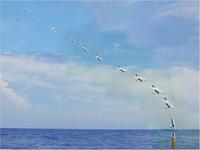
The U.S. Naval Research Laboratory (NRL) demonstrated the launch of an all-electric, fuel cell-powered, unmanned aerial system (UAS) from a submerged submarine. The successful submerged launch of a remotely deployed UAS offers a pathway to providing mission critical intelligence, surveillance, and reconnaissance (ISR) capabilities to the U.S. Navy’s submarine force.
-
-
Seventeen teams to compete in DARPA Robotics Challenge Trials
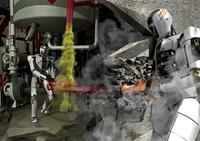
Four teams that built full robot hardware and software systems using their own funds qualified to join thirteen other teams to compete in the Defense Advanced Research Projects Agency (DARPA) Robotics Challenge (DRC) Trials. The event will take place 20-21 December at the Homestead-Miami Speedway in Homestead, Florida, where spectators can observe as the robots are tested on the capabilities that would enable them to provide assistance in future natural and man-made disasters.
-
-
Standardized performance tests for emergency response robots
Seventeen teams will be directing their emergency-response robots to perform eight basic tasks which were drawn from the Fukushima Daiichi response and then converted into standardized tests by researchers at the National Institute of Standards and Technology (NIST). A year later, the capabilities of robots that qualify in this year’s trials will be tested in a more realistic disaster scenario. In the winner-take-all finals, robots will perform all eight challenges consecutively. NIST engineers have been at the forefront of using standardized performance testing for emergency response robots used in bomb-response and for urban search-and-rescue operations. Since 2005, fifteen NIST tests have been adopted as standards by ASTM International, and about forty more are under various stages of development or review.
-
-
Earthquake early warning? There’s an app for that
Researchers from the University of California have unveiled a smartphone app designed to provide users an early warning of approaching earthquakes. Based on the proximity of the user to the earthquake’s epicenter, the app will provide alerts of between a few seconds and one minute before a tremor hits.
-
-
Y-12 security breach update: Old nun awaits sentencing while costs of new Y-12 facility not to be released until 2015
On 28 July 2012, three senior citizens, led by an 83-year old nun, easily breached the supposedly impregnable security systems protecting the Y-12 National Security Complex at Oak Ridge, Tennessee. The three peace activists wondered the grounds of the maximum security facility for a while before being noticed by security personnel. While the three aging protesters are awaiting sentencing, the two companies — Bechtel Corporation and Babcock and Wilcox – which were responsible for designing and implementing security at Y-12, have been named as the primary construction contractors for planning and design of the new uranium processing facility (UPF) to be built at Y-12.
-
-
Early warning system to detect abrupt climate change impacts
Climate change has increased concern over possible large and rapid changes in the physical climate system, which includes the Earth’s atmosphere, land surfaces, and oceans. Some of these changes could occur within a few decades or even years, leaving little time for society and ecosystems to adapt. A new report from the National Research Council states that even steady, gradual change in the physical climate system can have abrupt impacts elsewhere — in human infrastructure and ecosystems for example — if critical thresholds are crossed. The report calls for the development of an early warning system that could help society better anticipate sudden changes and emerging impacts.
-
-
Key to protecting Earth from asteroids: time

Scientists say that humanity can address the threats from asteroids of any size if given enough time and notice of the asteroid’s existence and trajectory. Even an asteroid the size of the 10-kilometer-wide space rock which scientists hold responsible for the extinction of dinosaurs sixty-five million years ago, can be destroyed, although it would take hitting the asteroid with multiple spacecrafts over a period of several decades.
-
-
Defending against electromagnetic-pulse attacks
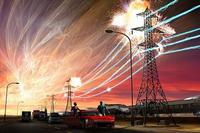
We are all familiar with the power of electromagnetic attacks from the movies: in “Ocean’s Eleven,” George Clooney’s gang disables Las Vegas’ power grid, and Keanu Reeves’ henchmen hold off the enemy robot fighters from their spaceship in the “Matrix Trilogy.” The heroes in the films succeed by sending out a very strong electromagnetic pulse, which changes the voltage in the vicinity so that regulators, switches, and circuit boards in electronic equipment go crazy. Researchers are now trying to figure out how such attacks can be detected. They have developed a measurement instrument for this purpose that is capable of determining the strength, frequency, and direction of electromagnetic attacks.
-
-
Weather risk management should be part of companies’ overall risk management
Volatile weather activity is increasing around the world. While extreme events such as typhoon Haiyan in the Philippines or flood Cleopatra in Sardinia may capture the headlines, minor fluctuations in expected weather can have big impacts on business performance across a wide range of industries. A new report focuses on the growing importance of weather risks for businesses, highlighting the economic impact of fluctuating weather conditions and how companies can protect themselves, using new approaches to “weather risk management.” Weather risk management products are already widely used in the United States, where they have become more readily accepted as a standard feature of companies’ overall risk management.
-
-
FY 2012 sees first constant-dollar decline in higher education R&D since FY 1974
The National Science Foundation (NSF) says that university spending on R&D in all fields totaled $65.8 billion in FY 2012. After adjusting for inflation, higher education R&D declined by 1 percent in FY 2012. This represents the first constant-dollar decline since FY 1974 and ends a period of modest growth in higher education R&D during FYs 2009-11, when R&D expenditures increased an average of 5 percent each year.
-
-
Deflecting asteroids to avoid Armageddon

It sounds like the script for a Hollywood film: a giant meteorite from outer space heading straight for the Earth and threatening the destruction of mankind. Yet such a scenario does represent a real threat to our planet, as researchers reckon that we can expect an asteroid to collide with Earth every few hundred years. In real life, though, nobody wants to rely on a rescue plan hastily improvised at the last minute. Scientists with the European-funded research project NEOShield are working to develop concepts designed to help avert these impacts and to alter asteroids’ orbits as they race toward Earth.
-
-
Testing explosives capability helping armor research
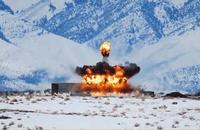
In modern warfare, military vehicles use enormous armored panels to defend against weapons. Boosting protection by adding more steel, however, eventually makes equipment too heavy to use. There are other ways to defend against a weapon besides trying to stop it with just mass — smarter, more economic ways that are waiting to be discovered.
-
-
Physics can lead the U.K. economic recovery: IOP president
Physics research in the United Kingdom has had a great year and physics can lead the U.K. economic recovery, but ongoing success depends on a healthy “educational pipeline,” Institute of Physics (IOP) president Frances Saunders told. For the success of physics research and application to continue, however, there had to be enough young people choosing to study physics post-16 and at university, she said. Numbers studying physics A-level had increased from a low point of 27,000 in 2006 to almost 36,000 this year, and applications to undergraduate physics courses had increased by 8 percent in 2013, she said.
-
-
Solar-powered, fabric-woven battery for “wearable electronics”
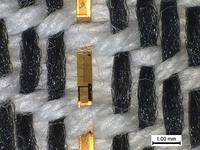
Though some people already seem inseparable from their smartphones, even more convenient, wearable, solar-powered electronics could be on the way soon, woven into clothing fibers or incorporated into watchbands. This novel battery development could usher in a new era of “wearable electronics.”
-
-
Helping farmers cope with climate change is big business
Monsanto estimates there is a $20 billion market for employing massive data analysis to provide weather forecasting and crop-growing advice tailored to individual plots of land. With a $300 billion agriculture industry in the United States exposed to climate change, predicting the effects of warming temperature is critical to the industry. Monsanto has recently acquired – for $1 billion — the Climate Corporation, a Silicon Valley company which uses data analysis and algorithms to redefine how farmers grow and harvest crops. The company provides farmers with insights which predict weather pattern and the changing effects on crops.
-
More headlines
The long view
A Shining Star in a Contentious Legacy: Could Marty Makary Be the Saving Grace of a Divisive Presidency?
While much of the Trump administration has sparked controversy, the FDA’s consumer-first reforms may be remembered as its brightest legacy. From AI-driven drug reviews to bans on artificial dyes, the FDA’s agenda resonates with the public in ways few Trump-era policies have.
Risk Assessment with Machine Learning
Researchers utilize geological survey data and machine learning algorithms for accurately predicting liquefaction risk in earthquake-prone areas.
Foundation for U.S. Breakthroughs Feels Shakier to Researchers
With each dollar of its grants, the National Institutes of Health —the world’s largest funder of biomedical research —generates, on average, $2.56 worth of economic activity across all 50 states. NIH grants also support more than 400,000 U.S. jobs, and have been a central force in establishing the country’s dominance in medical research. Waves of funding cuts and grant terminations under the second Trump administration are a threat to the U.S. status as driver of scientific progress, and to the nation’s economy.
The True Cost of Abandoning Science
“We now face a choice: to remain at the vanguard of scientific inquiry through sound investment, or to cede our leadership and watch others answer the big questions that have confounded humanity for millennia —and reap the rewards.”
Bookshelf: Smartphones Shape War in Hyperconnected World
The smartphone is helping to shape the conduct and representation of contemporary war. A new book argues that as an operative device, the smartphone is now “being used as a central weapon of war.”
New Approach Detects Adversarial Attacks in Multimodal AI Systems
New vulnerabilities have emerged with the rapid advancement and adoption of multimodal foundational AI models, significantly expanding the potential for cybersecurity attacks. Topological signatures key to revealing attacks, identifying origins of threats.
